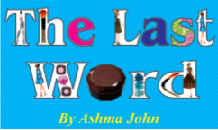
Tartan is a popular print worn at Christmas time but the reality of it being this staple image to associate with during Christmas either through décor or fashion just didn’t fall out of thin air. Tartan is strongly associated with Scotland. It is in fact a plaid of Scottish origin. Historically, members of clans used natural resources to dye wool to create the different types of tartan. Each individual type of tartan is said to be representative of a clan for a particular geographical area.
Today there is mass commercialization of the fabric using cheaper dyes, and modern tartan has been showing up all over on persons who are definitely not part of any clan. Even the Balmoral tartan, which was designed by Queen Victoria’s husband, Prince Albert in 1853 and is worn by the current Queen herself and members of the Royal Family and which supposedly requires the Queen’s permission to be worn is being sold at fast fashion outlets. Gift ideas include Balmoral leggings, totes, ties and even coffee mugs and luggage with the pattern. I’m not quite sure if to chuckle at the obvious thumb nosing at the elitist behaviour, or roll my eyes with disgust. However, from the inception the use of tartan wasn’t regulated and neither did it carry any symbolic meaning.

